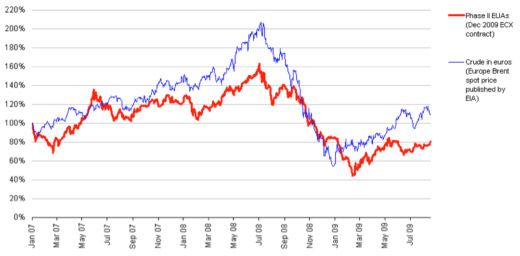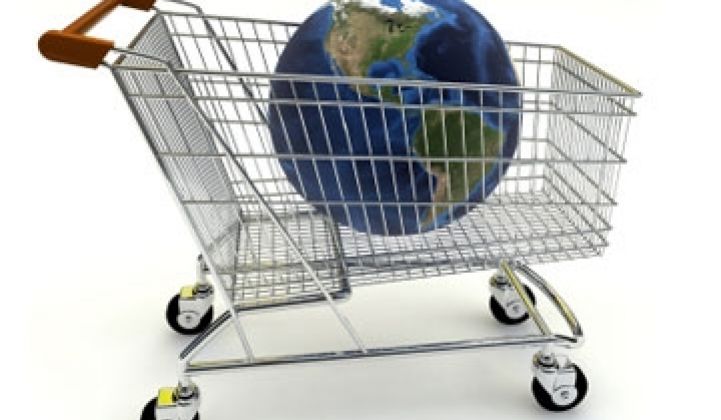Copenhagen didn't result in a binding agreement to curb emissions, the U.S. hasn't passed a comprehensive climate bill, and the lingering recession has caused the price of carbon credits to plummet.
It could be a good time to buy.
In nearly every carbon market, credits have lost a huge amount of value in a short period of time. Just after the conference in Copenhagen ended, EUA (European carbon allowance) futures tanked nearly 10 percent in a day. This capped a year-long bear market and EUA futures ended the year at 12.53 euros/tonne, down 21 percent from 2008 closing prices, according to Reuters. The auctions for the Regional Greenhouse Gas Initiative show a similar pattern. From September 2008 through June 2009, carbon prices rose. Then in September 2009, they abruptly turned south.
Things were even worse in voluntary carbon markets, where trading is often as much about predicting future mandatory carbon markets as it is about carbon offsetting. 2010 vintage carbon futures on the Chicago Climate Exchange fell from $1.65/tonne to just $0.15/tonne in 2009. Reuters (sub. req'd.) reported that 2009 volumes for voluntary carbon offsets were 40-50 percent below 2008 volumes, and demand declined further in December, traditionally one of the market's busiest months.
The market continues to look bleak in the early days of 2010. Many industrial firms in Europe have now calculated their emissions output for 2009, allowing them to sell excess EUAs early this year. This could send prices even lower in the first half of 2010.
But three scenarios could bring demand and prices up again in 2010, presenting an opportunity to buy early at today's depressed prices.
First, the U.S. Senate could pass a climate bill. With democrats already battered from the health care debate, first quarter passage of a bill looks unlikely. And there has been speculation that the Senate will siphon off an energy bill, which has much more political support, rather than attempting to tackle cap-and-trade. But climate change remains high on President Obama's agenda and with a House bill already passed, 2010 may still be the year that the U.S. designs a national compliance carbon market. If this happens, voluntary carbon futures are likely to shoot upwards, particularly for projects that will be eligible under the new compliance program.
Second, we could see real progress in the lead-up to the next round of negotiations in Mexico City in November 2010. If pre-conference negotiations gain traction, EUAs will likely rise in anticipation. Similarly, if Mexico City actually produces a treaty with teeth, carbon prices are likely to maintain a higher sustained level for some time afterwards.
Finally, crude oil prices could rise dramatically and bring EUA prices along for the ride. This seems counterintuitive, since you would think that higher oil prices create an additional incentive to reduce emissions directly, obviating the need for carbon credits. But historically, carbon prices have roughly tracked oil prices. This is because oil prices determine gas prices, which themselves indicate the cost of fuel-switching from coal- and petroleum-based electricity generation to natural gas. Since this has been the primary emissions reduction strategy in Europe so far, an increase in oil prices (and therefore natural gas prices) has brought carbon prices up with it.

Granted, these are all very much in question. The pessimist in me is loath to bet on any substantial legislative progress over the next year. But if you're a glass-half-full type and think that any of these scenarios will play out in 2010, buy your carbon credits early-the market may thank you later.



